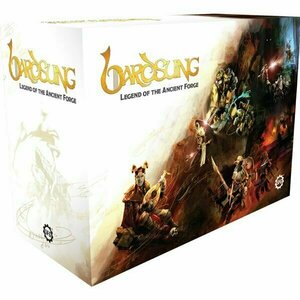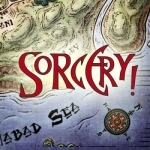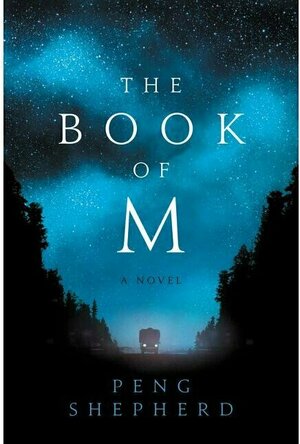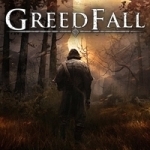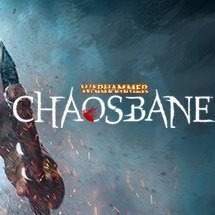Search

AirTycoon Online
Games
App
#1 App in South Korea and Hong Kong. #1 Roleplaying & simulation game in Germany, Swiss, Norway,...
Goddess in the Stacks (553 KP) rated The Book of M in Books
Sep 7, 2018
What defines a person? Your experiences? Your personality? The emotional bonds you forge? What happens when you forget? Are you still you if you don't remember who that is? The Book of M tackles these questions and takes an intimate look at what happens when some people forget but others remember.
We enter on Max and Ory in an abandoned hotel, running out of food and supplies. Max has lost her shadow, which means she will soon start forgetting. Everything. (There are rumors that Shadowless have died because they forgot to breathe or eat.) We learn it's been a few years since the phenomenon started happening, and flashbacks tell us the story of those early months. Like any good dystopia, it is a world-altering process. Governments are gone because no one remembered to run them. Food and other supplies are dwindling because farmers, shippers, manufacturers forgot what they were doing and how to do it.
But with the forgetting comes - magic, of a sort. Ory comes across a deer in the forest that instead of antlers, has wings sprouting from its forehead. Because someone forgot that deer shouldn't have wings - and so it happened. Forgetting that something can be destroyed can make it indestructible. Forgetting that you left a place can take you back to that place. Forgetting a place exists can make that place no longer exist. It's not a very controllable kind of magic. And it's dangerous - you can never be quite sure what you'll forget, and you can affect other people with it.
And the forgetting starts with losing your shadow. Ory gives Max a tape recorder, so she can record things she might forget. He posts signs around their hideout to remind her of things, like "Let no one in. Ory has a key." and "Don't touch the guns or the knives." But Max knows she is a danger to Ory, and so while she can still remember enough to function, she runs away.
The book mostly concerns Ory and Max's journeys across the country; Max trying to find something she's forgotten, and Ory trying to find Max. The adventure is gripping, heartbreaking, and at times confusing. (Mostly on Max's end, as magic warps things around her.) There are a few side characters who also have viewpoint chapters. Naz Ahmadi is an Iranian girl training for the Olympics in the US - in archery, which comes in quite handy. We also have The One Who Gathers, a mysterious man in New Orleans who has gathered a flock of shadowless.
If you ever played the roleplaying game Mage: the Ascension, and remember the concept of Paradox, this book reminds me of that a lot. (Is it a surprise that I'm a tabletop RPG geek? It shouldn't be. I own almost all of the old World of Darkness books, and currently play in a D&D game, and hopefully soon a second D&D game!) Anyway. Paradox. Where doing magic too far outside the bounds of acceptable reality punishes you, so you have to weigh the potential consequences against the magic you want to do.
I really enjoyed this debut novel; it is a very original take on a dystopia, and raised a lot of questions about personality, memories, and what makes a person the person you remember.
You can find all my reviews at http://goddessinthestacks.com
We enter on Max and Ory in an abandoned hotel, running out of food and supplies. Max has lost her shadow, which means she will soon start forgetting. Everything. (There are rumors that Shadowless have died because they forgot to breathe or eat.) We learn it's been a few years since the phenomenon started happening, and flashbacks tell us the story of those early months. Like any good dystopia, it is a world-altering process. Governments are gone because no one remembered to run them. Food and other supplies are dwindling because farmers, shippers, manufacturers forgot what they were doing and how to do it.
But with the forgetting comes - magic, of a sort. Ory comes across a deer in the forest that instead of antlers, has wings sprouting from its forehead. Because someone forgot that deer shouldn't have wings - and so it happened. Forgetting that something can be destroyed can make it indestructible. Forgetting that you left a place can take you back to that place. Forgetting a place exists can make that place no longer exist. It's not a very controllable kind of magic. And it's dangerous - you can never be quite sure what you'll forget, and you can affect other people with it.
And the forgetting starts with losing your shadow. Ory gives Max a tape recorder, so she can record things she might forget. He posts signs around their hideout to remind her of things, like "Let no one in. Ory has a key." and "Don't touch the guns or the knives." But Max knows she is a danger to Ory, and so while she can still remember enough to function, she runs away.
The book mostly concerns Ory and Max's journeys across the country; Max trying to find something she's forgotten, and Ory trying to find Max. The adventure is gripping, heartbreaking, and at times confusing. (Mostly on Max's end, as magic warps things around her.) There are a few side characters who also have viewpoint chapters. Naz Ahmadi is an Iranian girl training for the Olympics in the US - in archery, which comes in quite handy. We also have The One Who Gathers, a mysterious man in New Orleans who has gathered a flock of shadowless.
If you ever played the roleplaying game Mage: the Ascension, and remember the concept of Paradox, this book reminds me of that a lot. (Is it a surprise that I'm a tabletop RPG geek? It shouldn't be. I own almost all of the old World of Darkness books, and currently play in a D&D game, and hopefully soon a second D&D game!) Anyway. Paradox. Where doing magic too far outside the bounds of acceptable reality punishes you, so you have to weigh the potential consequences against the magic you want to do.
I really enjoyed this debut novel; it is a very original take on a dystopia, and raised a lot of questions about personality, memories, and what makes a person the person you remember.
You can find all my reviews at http://goddessinthestacks.com
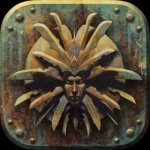
Planescape: Torment
Games
App
Reviewers say: "Planescape: Torment is a wonderful game, and its Enhanced Edition is a splendid,...
Gareth von Kallenbach (980 KP) rated Greedfall in Video Games
Oct 31, 2019
Greedfall the latest action-adventure roleplaying game from the folks at Spider and Focus Home Interactive is set in the far-off land of Teer Fradee where numerous factions vie for dominance over the continent (and its native inhabitants) while searching for an elusive cure for the Malichor, an insidious disease that threatens to wipe out the inhabitants. The story begins in the plague-ridden streets of Serene, where you immediately get a sense of what it must have been like in Europe while the black plague threatened to wipe out entire societies. You play the role of De Sardet, a young noble who sets sail for the new world in an effort to bring back a cure and assist his cousin who has taken over as the newly appointed governor. Using your skills of diplomacy, sword play, and stealth you’ll have to befriend not only the other factions, but the natives if you wish to bring a cure home.
Greedfall is a beautiful game, taking place in large expansive cities reminiscent of Paris or London in the 18th century and the lush forest landscape of Teer Fradee. Each character is costumed in what could only be considered French Musketeer and the island natives’ representative of what early European settlers in North America must have encountered. The sense of scale between the massive cities, and the vast expanse of the frontier provides a sense of openness that rival many other titles.
It’s this sense of openness however, where Greedfall initially stumbles. Much like games such as Dragon Age, the illusion of an open world environment is regularly halted by “invisible” walls that impede your progress. Looking through a small grove of trees you see your objective but are unable to pass through them directly. Instead, you must follow the path and climb a rock ledge to reach it. Several times while attempting to get to my highlighted objective, I’d get stuck on small bushes, or my path stopped by what should be easily passable brush. There are moments where it’s uncertain whether or not I could pass through the environment, so I’d have to refer to my map to see if that was the correct path, or I had to follow some other indirect route to get there. While this game style is hardly new (and had been common in the past until advancements in both computing power and storage space allowed for larger environments) the inconsistencies of what was passable and impassable lead to a bit more frustration then it should.
Combat is quick and easy to pick up with a light and heavy attack and a block or dodge for defense. Each successful attack also builds up your fury meter which allows for stronger strikes against enemy opponents. You and your opponents also benefit from armor and health attributes. Armor can help defend against health damage, but once the armor is depleted there is little standing between you and certain death at the end of a musket or blade. Numerous spells and potions can be used to buff up your character, cause elemental damage or provide quick healing when needed. Besides swords, maces and axes there are also an assortment of pistols and rifles for ranged attack. If you so choose, you can also create magic wielding warriors who can utilize spells and magic rings in combat as well. Various skill points can be added to your offensive and defensive capabilities that allows for stronger strikes, better mobility (unlocking the ability to roll away from danger is something that I highly recommend) and increase the length of spells.
The story and character voice acting is typically top notch, the one glaring exception to this was the accent used by the natives. As much as I hoped I would get used to it, the worse it tended to get. While creating an accent that is supposed to be unique to the people who share it should be applause worthy, it often felt forced and in most cases entirely TOO artificial. The cut scenes that are used throughout to further along the story are outstanding, and while the facial expressions generally left a lot to be desired, it didn’t detract too much from what was being said. The amount of voice acting and cut scenes puts it on par with far larger budget titles and outside of those few gripes feel they are done well overall.
Technically the game tends to suffer from some annoying and immersion breaking problems. While I played the game using a Nvidia GTX 2080 Super, there were times when the frame rates would drop from the typical 80+ on my ultra-wide screen down to 15 or 20. These slowdowns didn’t last long but seemed to come at times I wouldn’t have expected them. In my attempts to isolate them, I tried lowering a number of the graphical settings, but in most cases, it didn’t seem to have much effect. These have improved somewhat with the latest patches to the game, but still exist from time to time. There are also the random crashes to desktop for no reason at all, thankfully the game autosaves frequently enough (and allows you to manually save as often as you wish) that I never lost much progress when these occurred, but it’s something to be aware of. Characters and animals occasionally get stuck on the environment, I one time found myself stuck in a small hole that I should have easily been able to walk out of, and another time a large deer was stuck running in place next to a large rock. While these glitches didn’t cause any serious quest ending problems, they are just additional polish issues that still need to be worked out. As other reviewers have pointed out, there are some issues going from light to dark environments where it seems to take awhile for the lighting to adjust as it should.
Greedfall even with the inconsistent accents and technical difficulties is still an easy game to recommend for folks looking for a change of pace from the standard Dungeons and Dragons tropes. There is plenty of political intrigue and mysteries to unravel on Teer Fradee and no one faction that can be singled out as good or evil. Sacrifices have to be made when dealing with each faction and doing something for one will almost always cause a conflict with another. While the choices you make, do impact how others see you, they aren’t as world changing as they could have been. Greedfall is a long game easily 40+ hours depending on how many side quests you choose to complete on your search for a cure and it tells an interesting enough story to keep you engaged throughout.
What I liked: Interesting factions, Beautiful scenery, Unique setting
What I liked less: Invisible walls, Technical glitches, Inconsistent voice acting
Greedfall is a beautiful game, taking place in large expansive cities reminiscent of Paris or London in the 18th century and the lush forest landscape of Teer Fradee. Each character is costumed in what could only be considered French Musketeer and the island natives’ representative of what early European settlers in North America must have encountered. The sense of scale between the massive cities, and the vast expanse of the frontier provides a sense of openness that rival many other titles.
It’s this sense of openness however, where Greedfall initially stumbles. Much like games such as Dragon Age, the illusion of an open world environment is regularly halted by “invisible” walls that impede your progress. Looking through a small grove of trees you see your objective but are unable to pass through them directly. Instead, you must follow the path and climb a rock ledge to reach it. Several times while attempting to get to my highlighted objective, I’d get stuck on small bushes, or my path stopped by what should be easily passable brush. There are moments where it’s uncertain whether or not I could pass through the environment, so I’d have to refer to my map to see if that was the correct path, or I had to follow some other indirect route to get there. While this game style is hardly new (and had been common in the past until advancements in both computing power and storage space allowed for larger environments) the inconsistencies of what was passable and impassable lead to a bit more frustration then it should.
Combat is quick and easy to pick up with a light and heavy attack and a block or dodge for defense. Each successful attack also builds up your fury meter which allows for stronger strikes against enemy opponents. You and your opponents also benefit from armor and health attributes. Armor can help defend against health damage, but once the armor is depleted there is little standing between you and certain death at the end of a musket or blade. Numerous spells and potions can be used to buff up your character, cause elemental damage or provide quick healing when needed. Besides swords, maces and axes there are also an assortment of pistols and rifles for ranged attack. If you so choose, you can also create magic wielding warriors who can utilize spells and magic rings in combat as well. Various skill points can be added to your offensive and defensive capabilities that allows for stronger strikes, better mobility (unlocking the ability to roll away from danger is something that I highly recommend) and increase the length of spells.
The story and character voice acting is typically top notch, the one glaring exception to this was the accent used by the natives. As much as I hoped I would get used to it, the worse it tended to get. While creating an accent that is supposed to be unique to the people who share it should be applause worthy, it often felt forced and in most cases entirely TOO artificial. The cut scenes that are used throughout to further along the story are outstanding, and while the facial expressions generally left a lot to be desired, it didn’t detract too much from what was being said. The amount of voice acting and cut scenes puts it on par with far larger budget titles and outside of those few gripes feel they are done well overall.
Technically the game tends to suffer from some annoying and immersion breaking problems. While I played the game using a Nvidia GTX 2080 Super, there were times when the frame rates would drop from the typical 80+ on my ultra-wide screen down to 15 or 20. These slowdowns didn’t last long but seemed to come at times I wouldn’t have expected them. In my attempts to isolate them, I tried lowering a number of the graphical settings, but in most cases, it didn’t seem to have much effect. These have improved somewhat with the latest patches to the game, but still exist from time to time. There are also the random crashes to desktop for no reason at all, thankfully the game autosaves frequently enough (and allows you to manually save as often as you wish) that I never lost much progress when these occurred, but it’s something to be aware of. Characters and animals occasionally get stuck on the environment, I one time found myself stuck in a small hole that I should have easily been able to walk out of, and another time a large deer was stuck running in place next to a large rock. While these glitches didn’t cause any serious quest ending problems, they are just additional polish issues that still need to be worked out. As other reviewers have pointed out, there are some issues going from light to dark environments where it seems to take awhile for the lighting to adjust as it should.
Greedfall even with the inconsistent accents and technical difficulties is still an easy game to recommend for folks looking for a change of pace from the standard Dungeons and Dragons tropes. There is plenty of political intrigue and mysteries to unravel on Teer Fradee and no one faction that can be singled out as good or evil. Sacrifices have to be made when dealing with each faction and doing something for one will almost always cause a conflict with another. While the choices you make, do impact how others see you, they aren’t as world changing as they could have been. Greedfall is a long game easily 40+ hours depending on how many side quests you choose to complete on your search for a cure and it tells an interesting enough story to keep you engaged throughout.
What I liked: Interesting factions, Beautiful scenery, Unique setting
What I liked less: Invisible walls, Technical glitches, Inconsistent voice acting
Gareth von Kallenbach (980 KP) rated Warhammer: Chaosbane in Video Games
Jul 8, 2019
There have been a lot of Warhammer games released over the past year or so. Everything from managing spaceships, to Real-Time Strategy, to Tactical Combat based games have been represented between the Warhammer and the Warhammer 40,000 universe. EKO Software and Bigben decided to add the action-RPG to the mix with their fun to play Diablo clone Warhammer: Chaosbane.
Much like the games that it takes inspiration from, you have the opportunity to pick one of four characters to battle the Lords of Chaos and bring order to the land. Your standard archetype characters are all here in standard Warhammer Fantasy. The Dwarven “Slayer” class, for those who like a barbarian class to rage havoc upon his foes, The High-Elf Mage who utilizes his magic to bring down the forces of chaos, the ho-hum Imperial Soldier who can take and deal out a huge amount of damage, and the Wood Elf who uses her bow and dagger to deal damage at a frighteningly fast pace.
Each of the characters have their own unique secondary ability that allows them to gain a strategic advantage on their foes. The Slayer can vault himself into enemies (much like the Barbarian class in Diablo), The Mage can control magical projectiles towards his targets, the Imperial soldier can shield bash targets and the Wood Elf can tumble in and out of danger. I played through the vast majority of the game as the Wood Elf and learning to use her tumble ability and stay mobile is some of the best ways to beat the bosses that you will come across.
One area where Warhammer: Chaosbane improves on the standard Diablo formula is how it handles health and energy/mana. Various items you equip can provide health regeneration on their own or you also possess the ability to use a “health Potion” that refills slowly each time you use it. Thankfully this means you don’t have individual health potions cluttering up your inventory. Mana/Energy is used for special attacks and actions…each time you use a skill some of your Mana/Energy is used. There are a few ways you can recoup your energy. The first is to use your general attacks on creatures, as you successfully hit each one your energy fills a little until it tops the meter off. The other way is to reach out to your familiar who follows you around the screen. My familiar was a butterfly that I could run over to when I’d run low on energy and it would fill my meter about half way. When you utilize your familiar in this way they must also recharge, so use them wisely.
One of the more unique items that you acquire as you slice your way through the hordes of demons and undead are Blood Orbs. Blood Orbs appear on the battlefield seemingly at random (although the more enemies you cut down the more likely they are to appear). As you acquire these orbs it fills a Blood lust meter and when full imbues your character with incredible power and near invincibility until the meter runs out. The Orbs don’t stay on the battlefield forever however, and they slowly lose power the longer you wait to gather them, so it encourages you to step out of the battle (or in my case roll out of the battle) to gather them as quickly as you can. As you progress your character you’ll be given the chance to upgrade these as well which essentially allows you to fill multiple meters and grants you this special power for longer lengths of time.
Skills are broken down into various types which allow you to outfit your character to best suit your play style. There are literally dozens of both active and passive skills to choose from, and each of these skills can be upgraded as well for improved effects or damage. As the Wood Elf Elessa, I was able to summon dryads to my side to help me deal with the hordes of enemies. In edition there are also God Skills that you acquire as you level up and complete missions. These special skills unlock more powerful abilities but also unlock traits as you apply the points. Traits such as health regeneration or critical hit chances are only some of the ones that you can unlock along the God Skill tree that give you a sense that your character is becoming more unstoppable with every skill acquired.
Unfortunately, the inconsistent voice acting is what relegates Chaosbane to being good instead of great. I made the mistake of choosing the character with the worst voice acting in the bunch and if I had played through with another character I may not have noticed how truly terrible it was. Elessa delivers her lines in an almost wooden (pun intended) manner, almost as if reading directly from a script. This gets even more noticeable when on occasion her voice changes to that of a man. The developers and testers did a good job of catching most of them, but there were at least five or six dialog trees where Elessa’s voice changed completely. I have two theories on this, my first theory (although I hadn’t confirmed this) is that the character was originally meant to be portrayed as a man and was changed to add a bit more diversity to the line-up. Not that there is anything wrong with having the main characters all be male, but it certainly could have limited the appeal of the audience. My second theory is that some of the dialog was simply place holders while they were sourcing out the right voice actors and simply missed replacing the audio bytes.
Either way, Elessa isn’t the only place where the voice acting takes a turn for the worst, other characters suffer from this fate as well. While the Warhammer games have always used bravado to deliver their dialog, it is simply too over the top in most cases. The first boss I encountered sounded like Cobra Commander who had just walked off the set of the latest GI Joe Cartoon to lead the forces of Chaos…Yo Joe! The fact that the game is voice acted entirely is something that I do applaud the developers for insisting on, it’s just disappointing that you find yourself reading through the dialog as quickly as possible and skipping the voices whenever you can.
Even with its flaws Warhammer: Chaosbane is a fun Diablo clone and an absolute blast to play. The story is forgettable, the voices laughable, but the combat scratches the same itch that any other action roleplaying game provides. There’s plenty of loot to acquire, that ranges from common to rare, and your ability to “bless” items to make them more powerful is an added bonus. There are a whopping ten levels of difficulty, each level provides for a more difficult adventure with the promise of even better loot. With both couch co-op and online multiplayer, it even harkened me back to the days of playing the original Gauntlet in the arcades. If you like the Warhammer universe and are looking for a game you can pick up and play with relative ease, then Warhammer: Chaosbane is just the game you are looking for.
What I liked: Fun combat, Amazing selection of skills, Plays equally well with keyboard/mouse or controller
What I liked less: Terrible voice acting, Repetitive loot drops, Forgettable story
Much like the games that it takes inspiration from, you have the opportunity to pick one of four characters to battle the Lords of Chaos and bring order to the land. Your standard archetype characters are all here in standard Warhammer Fantasy. The Dwarven “Slayer” class, for those who like a barbarian class to rage havoc upon his foes, The High-Elf Mage who utilizes his magic to bring down the forces of chaos, the ho-hum Imperial Soldier who can take and deal out a huge amount of damage, and the Wood Elf who uses her bow and dagger to deal damage at a frighteningly fast pace.
Each of the characters have their own unique secondary ability that allows them to gain a strategic advantage on their foes. The Slayer can vault himself into enemies (much like the Barbarian class in Diablo), The Mage can control magical projectiles towards his targets, the Imperial soldier can shield bash targets and the Wood Elf can tumble in and out of danger. I played through the vast majority of the game as the Wood Elf and learning to use her tumble ability and stay mobile is some of the best ways to beat the bosses that you will come across.
One area where Warhammer: Chaosbane improves on the standard Diablo formula is how it handles health and energy/mana. Various items you equip can provide health regeneration on their own or you also possess the ability to use a “health Potion” that refills slowly each time you use it. Thankfully this means you don’t have individual health potions cluttering up your inventory. Mana/Energy is used for special attacks and actions…each time you use a skill some of your Mana/Energy is used. There are a few ways you can recoup your energy. The first is to use your general attacks on creatures, as you successfully hit each one your energy fills a little until it tops the meter off. The other way is to reach out to your familiar who follows you around the screen. My familiar was a butterfly that I could run over to when I’d run low on energy and it would fill my meter about half way. When you utilize your familiar in this way they must also recharge, so use them wisely.
One of the more unique items that you acquire as you slice your way through the hordes of demons and undead are Blood Orbs. Blood Orbs appear on the battlefield seemingly at random (although the more enemies you cut down the more likely they are to appear). As you acquire these orbs it fills a Blood lust meter and when full imbues your character with incredible power and near invincibility until the meter runs out. The Orbs don’t stay on the battlefield forever however, and they slowly lose power the longer you wait to gather them, so it encourages you to step out of the battle (or in my case roll out of the battle) to gather them as quickly as you can. As you progress your character you’ll be given the chance to upgrade these as well which essentially allows you to fill multiple meters and grants you this special power for longer lengths of time.
Skills are broken down into various types which allow you to outfit your character to best suit your play style. There are literally dozens of both active and passive skills to choose from, and each of these skills can be upgraded as well for improved effects or damage. As the Wood Elf Elessa, I was able to summon dryads to my side to help me deal with the hordes of enemies. In edition there are also God Skills that you acquire as you level up and complete missions. These special skills unlock more powerful abilities but also unlock traits as you apply the points. Traits such as health regeneration or critical hit chances are only some of the ones that you can unlock along the God Skill tree that give you a sense that your character is becoming more unstoppable with every skill acquired.
Unfortunately, the inconsistent voice acting is what relegates Chaosbane to being good instead of great. I made the mistake of choosing the character with the worst voice acting in the bunch and if I had played through with another character I may not have noticed how truly terrible it was. Elessa delivers her lines in an almost wooden (pun intended) manner, almost as if reading directly from a script. This gets even more noticeable when on occasion her voice changes to that of a man. The developers and testers did a good job of catching most of them, but there were at least five or six dialog trees where Elessa’s voice changed completely. I have two theories on this, my first theory (although I hadn’t confirmed this) is that the character was originally meant to be portrayed as a man and was changed to add a bit more diversity to the line-up. Not that there is anything wrong with having the main characters all be male, but it certainly could have limited the appeal of the audience. My second theory is that some of the dialog was simply place holders while they were sourcing out the right voice actors and simply missed replacing the audio bytes.
Either way, Elessa isn’t the only place where the voice acting takes a turn for the worst, other characters suffer from this fate as well. While the Warhammer games have always used bravado to deliver their dialog, it is simply too over the top in most cases. The first boss I encountered sounded like Cobra Commander who had just walked off the set of the latest GI Joe Cartoon to lead the forces of Chaos…Yo Joe! The fact that the game is voice acted entirely is something that I do applaud the developers for insisting on, it’s just disappointing that you find yourself reading through the dialog as quickly as possible and skipping the voices whenever you can.
Even with its flaws Warhammer: Chaosbane is a fun Diablo clone and an absolute blast to play. The story is forgettable, the voices laughable, but the combat scratches the same itch that any other action roleplaying game provides. There’s plenty of loot to acquire, that ranges from common to rare, and your ability to “bless” items to make them more powerful is an added bonus. There are a whopping ten levels of difficulty, each level provides for a more difficult adventure with the promise of even better loot. With both couch co-op and online multiplayer, it even harkened me back to the days of playing the original Gauntlet in the arcades. If you like the Warhammer universe and are looking for a game you can pick up and play with relative ease, then Warhammer: Chaosbane is just the game you are looking for.
What I liked: Fun combat, Amazing selection of skills, Plays equally well with keyboard/mouse or controller
What I liked less: Terrible voice acting, Repetitive loot drops, Forgettable story
